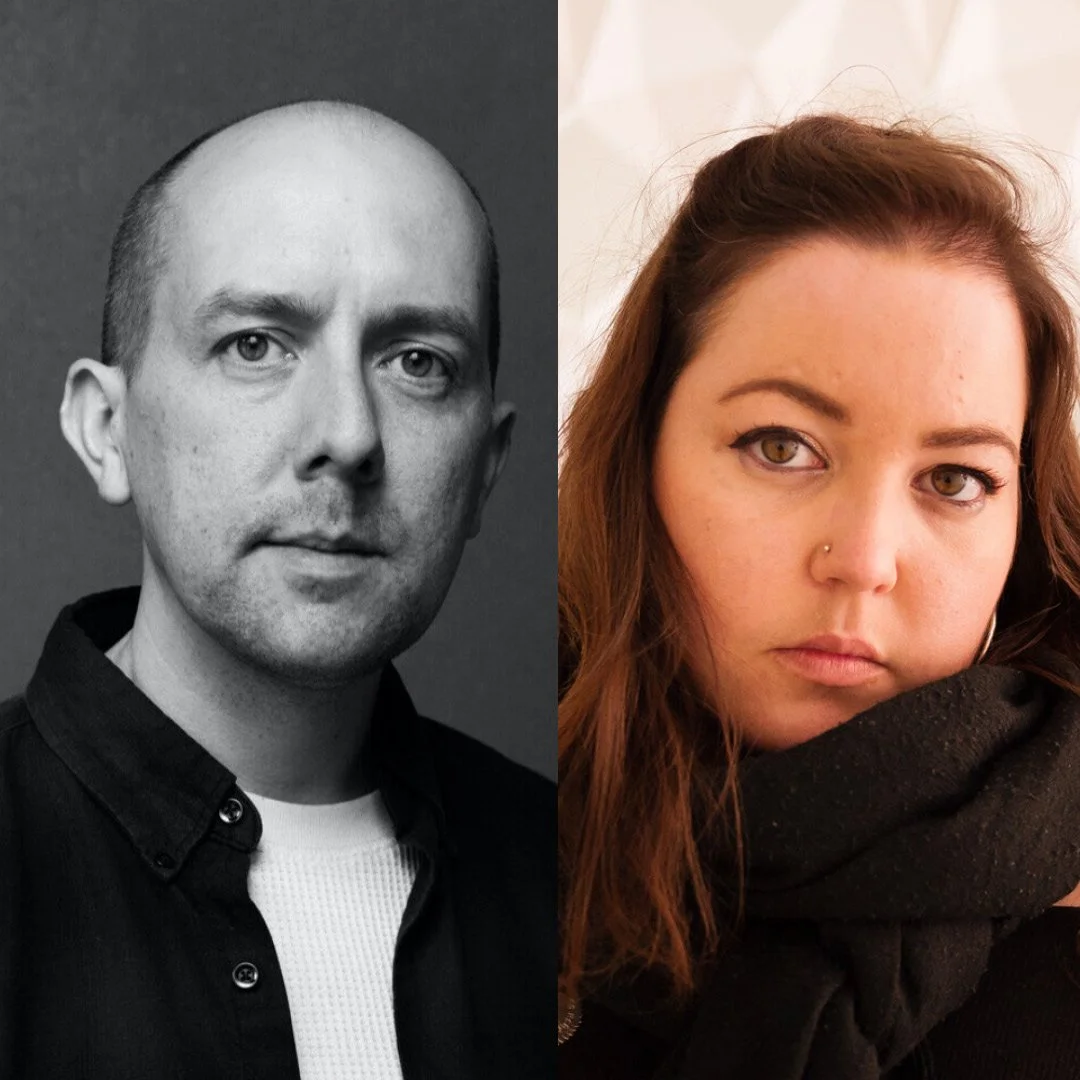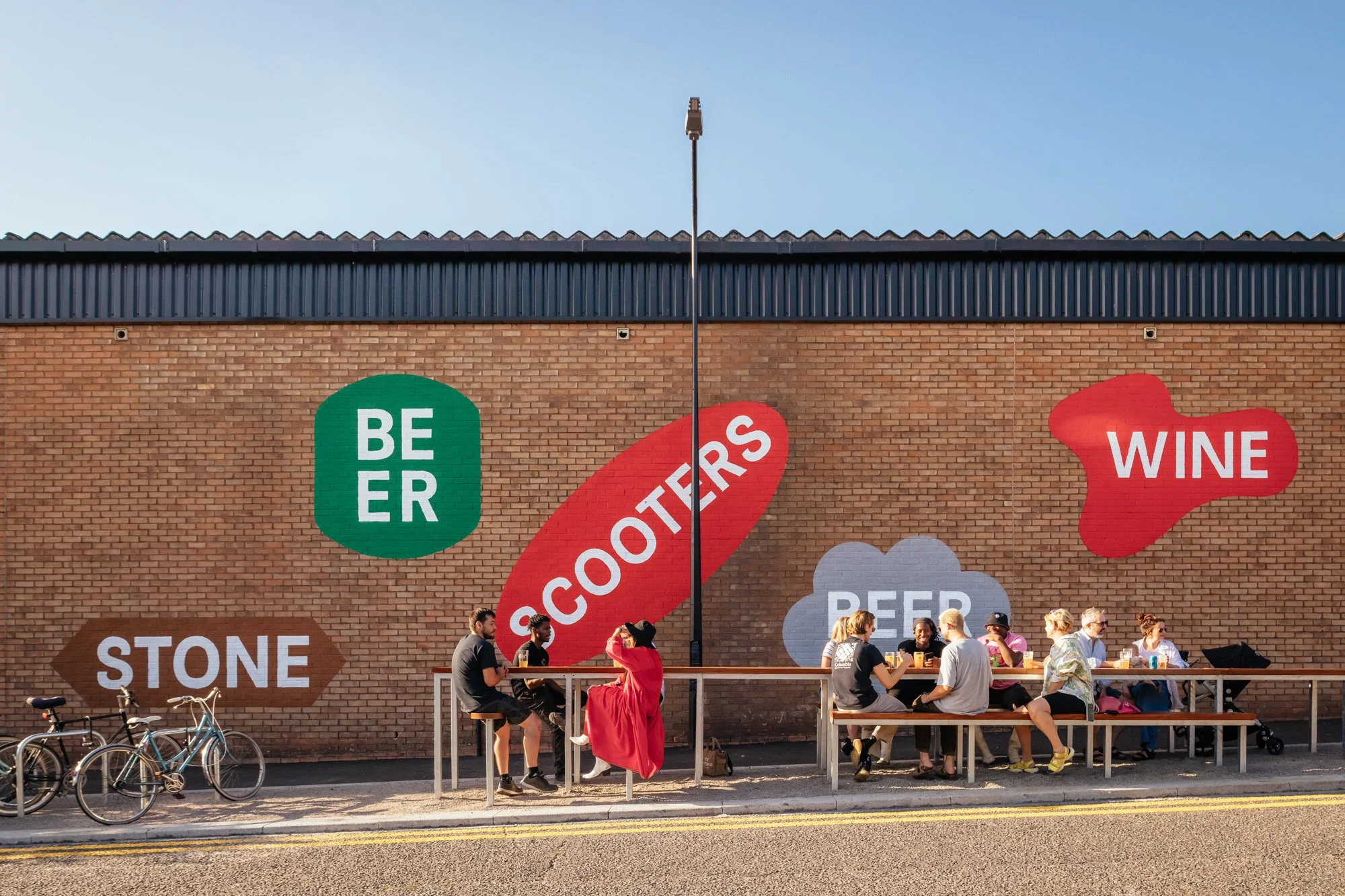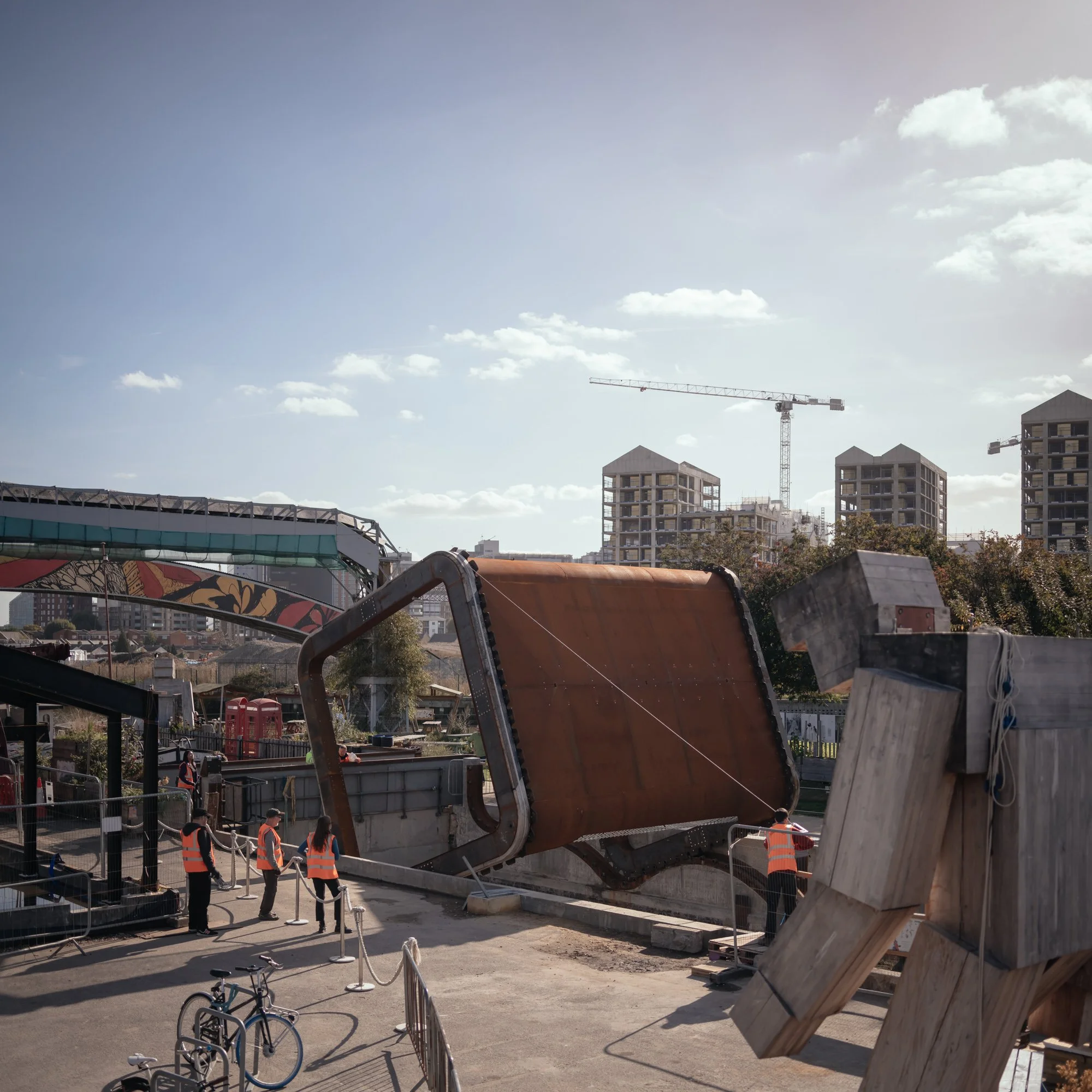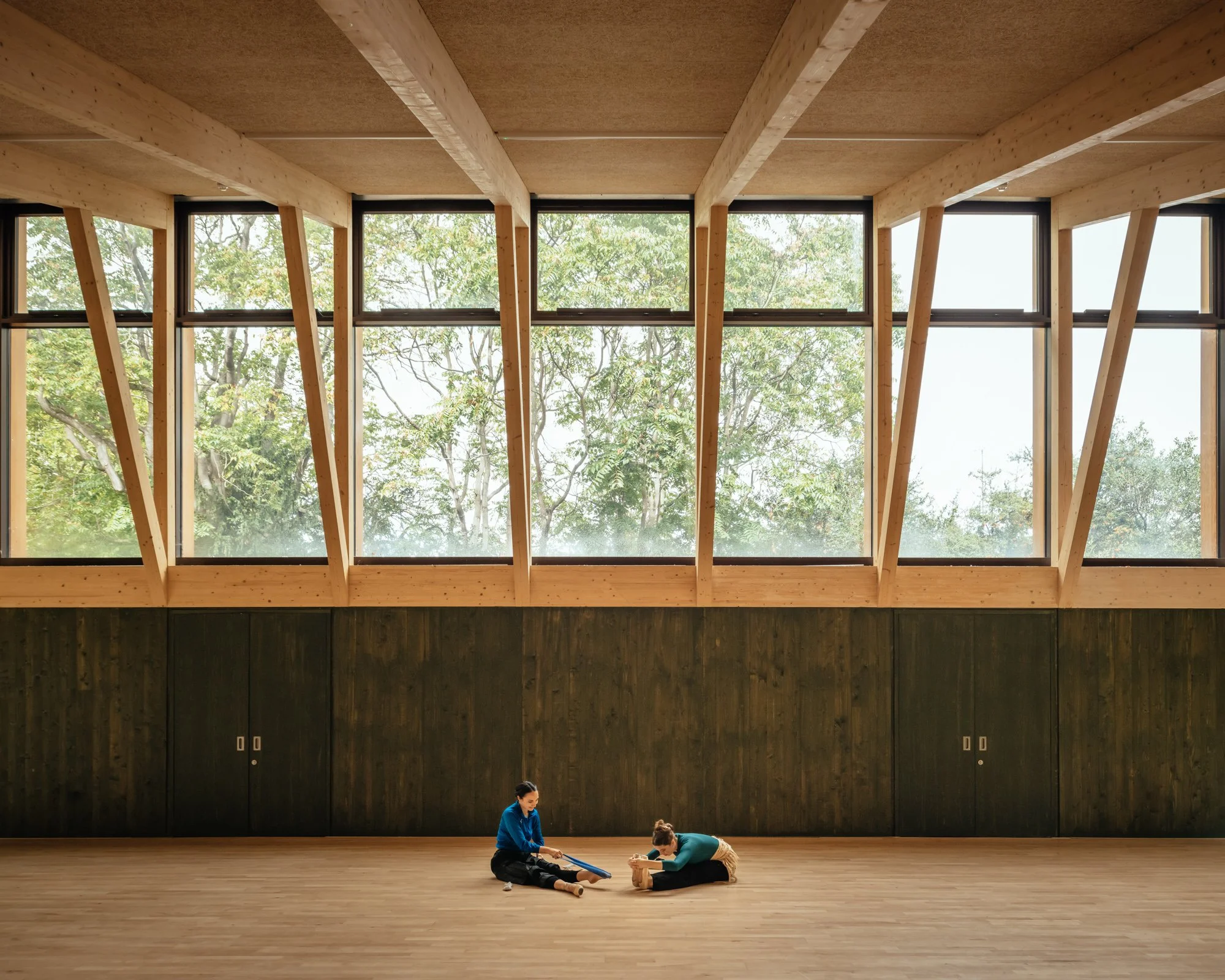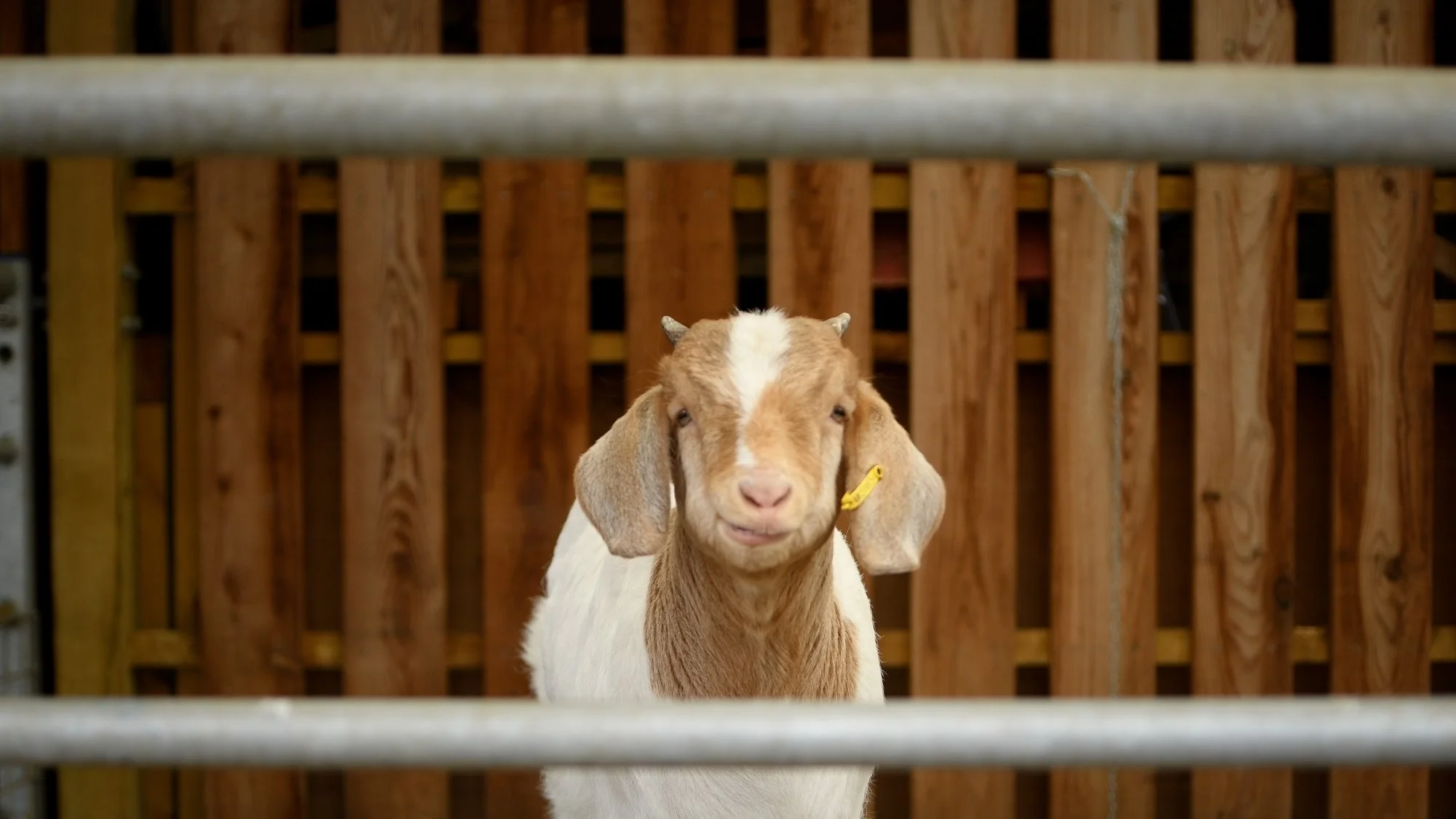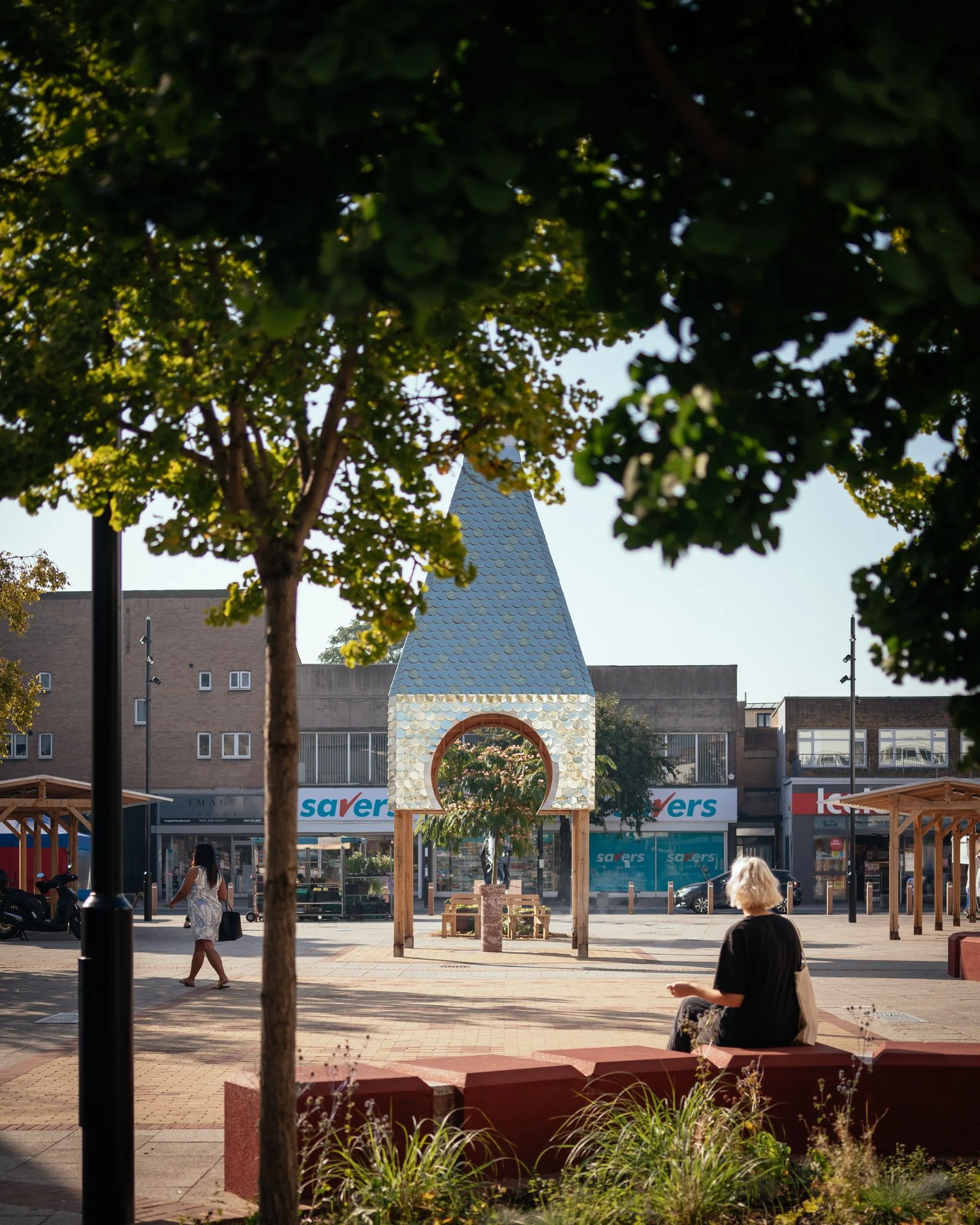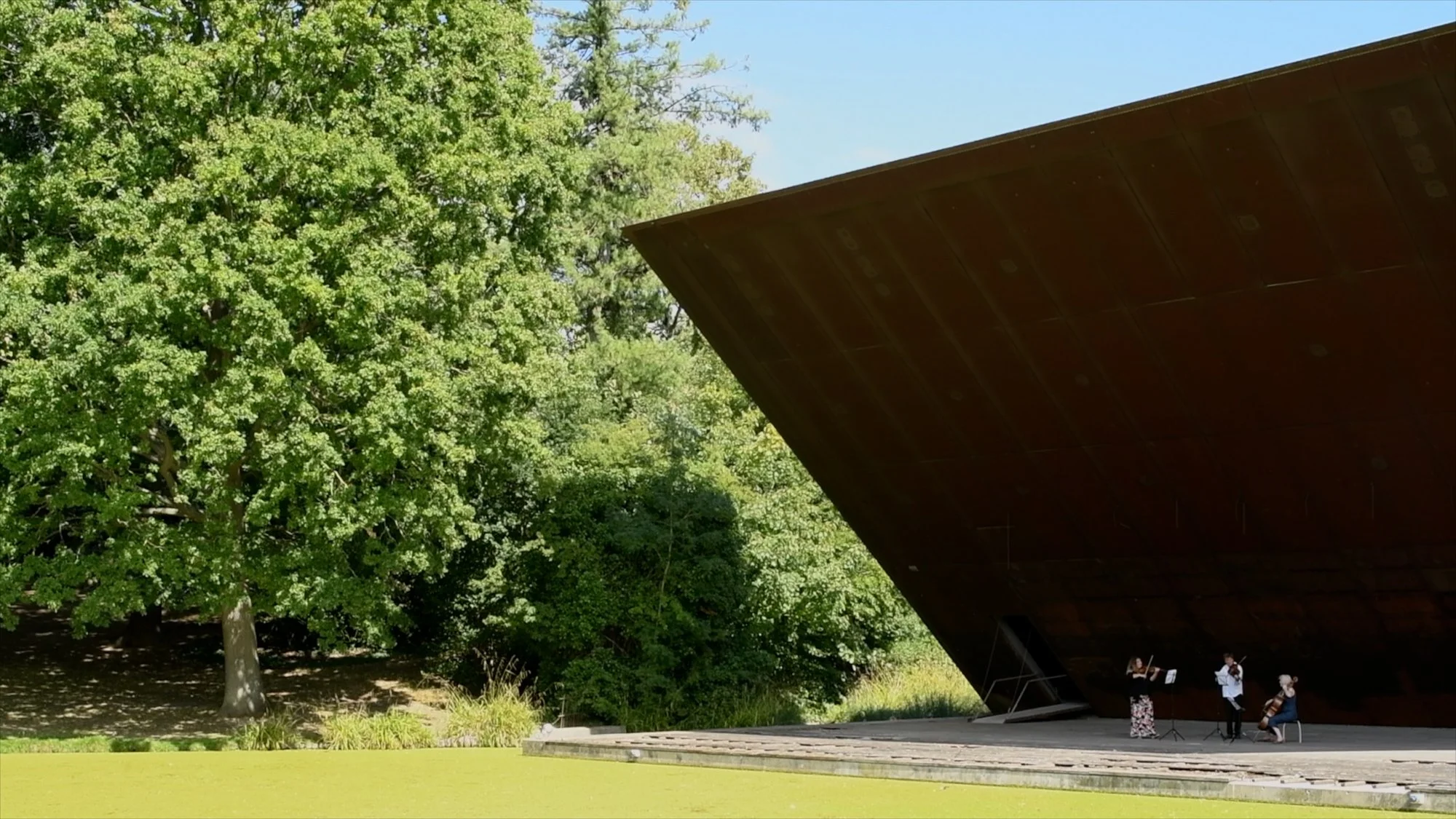Jim Stephenson and Sofia Smith’s curated Open House Festival collection.
For the Open House Festival this year we have invited six different individuals and collectives to curate strands of the festival programme. These collections and event are their chance to share with others the buildings, places and themes they see as worthy of celebration and exploration.
Jim Stephenson is an architectural photographer and filmmaker, he runs a small film studio called Stephenson& with, (and is married to) writer and photographic artist Sofia Smith.
In the spirit of the 2023 festival we have curated a list of London spaces for you to visit that reflect the maxim that architecture, much like art, is for everyone. We love to travel and through our work around the UK and abroad we have seen a lot of buildings, but on this list, this time, you won’t find any private houses or grand office buildings. We have selected community used spaces that aren’t your ordinary examples of investment in people and places.
Often understated, sustainable and multipurpose, we hope our choices can serve as inspirations for what is possible. We are championing them because we believe that spaces like these make the people who use them feel like they too are deserving of beautiful, warm and open built environments, places that don’t tell you how to behave, but instead offer a welcoming smile and a hot cup of tea. Places where children and young people don’t feel like they are trespassing, but instead were built for them.
As you might have guessed by now, although we work in all kinds of buildings, our little hearts beat faster when we get to experience something genuinely made for any and all to use. We are stair-sitting, little-cafe-finding, people-watching, public-square enthusiasts for sure. There is a particular thrill in realising you have discovered a new place to have your lunch on a sunny day, or drink a can of beer after work and we are here for it. We love to give (and receive) a good recommendation, so take it from us, we’ve been to all these places and we want to share them with you because they are emblematic of the kind of future investment in diverse communities this city deserves. So here we are, shouting from the roof tops ‘Look at what is possible!
Look at the joy and pride these spaces bring!’ Happy Adventuring People!
Perhaps once more typical in Copenhagen or Berlin, the two brewery-tap rooms on this old industrial estate are somewhat more of a common occurrence in cities across the UK now; you can find them in just about any London borough if you know where to look. Lockwood Way in Waltham Forest however, has been a real revelation. The council funded do-up was the result of a team up between We Made That architects and Europa graphic designers. The aim? To create a more sustainable, safe and productive space, and we think they’ve more than succeeded. Lockwood is a bold, surprising and playfully practical community hub that supports the surrounding residential area and local economy. The whole is most definitely more than the sum of its parts.
Come for the beer - Stay for the family friendly, accessible outdoor space, the weekend markets, the innovative businesses and the beer. Did I mention the beer? There’s a popular hole-in-the-wall bakery and a winery if beer isn’t your thing. Keep an eye out for the electric retrofit vintage scooters whizzing in and out of their workshop too.
2. Waltham Forest Town Hall
Another from the Waltham Forest regeneration works; this civic campus dating from the late 30’s has recently been given a sensitive facelift and the thoughtful retrofit of the historic town hall has created a flexible work space that actually positively impacts the mental health of the people who work there. GASP!
But the real gem of this project is Fellowship Square, a big open space in the form of a courtyard and large water feature, designed with no particular intended use except that it is for the public. The most civic minded of additions, the generous space places no requirements or expectations on the people who pass through; on a hot day you can find children dodging in and out of the huge fountain while people eat their lunches on the benches and, as evening descends and the dramatic lights are turned on, lovers will stop for a sweet moment together. A reminder that town halls aren’t just for births, deaths and marriages, they’re for all the bits in between too.
3. Cody Dock Rolling Bridge
As the age old adage (and Lord of the Rings) goes; sometimes it’s not the destination that matters, but how you get there that’s important — and (we might add), it’s how you tell the story of your journey at the end. This group project from TRP et al. will certainly have you telling tales when you get home.
The Cody Dock Rolling Bridge is a brilliant feat of haptic design and finely balanced engineering which is a lasting testament to the teams thoughtful engagement with the community, their skill and their understanding of the potential a working dry dock could bring. The dock itself is an ex-industrial space that has been transformed by the community of artists who have taken it over, there is a little cafe and soon local boats will be able to moor up too. The bridge makes a big impact, not only visually but also to the working function of the dock and the surrounding landscape, forming as it does a vital connection that unlocks the Leaway, a local riverside foot and cycle route. Operated, as if by magic, by hand winches and pure science, the bridge takes about 20 minutes to roll along and is well worth sticking around to see.
4. Westminster Chapel
When adventuring around any city, we love to discover places and buildings that you didn’t know you were allowed to visit and go into, and more often than not, religious buildings fit that bill in countries all over the world. In our work we’ve been welcomed into spaces sacred to virtually any faith you care to mention, and in our spare time, if there is a graveyard worth visiting, we’re there in a flash. These places tell you not only about the history of the communities they serve, but of the people who are still rooted in that place.
At the Evangelical Chapel at Westminster, when planning the refurbishment of this beautiful Victorian era building (which is full of original details), organisers were keen to bring more relevance to their place within the community and increase their civic contribution to the city; no mean feat when it had previously only been open once per week. With light touches (like the new golden gates) and shrewd architectural moves (such as removing the pews), this entire building has been literally and figuratively opened up, going to show that architecture and restoration doesn’t always have to be ‘massive moves’ to create big results. Now fully accessible and modernised, it’s open everyday to the public and there is even a little cafe.
5. Lea Bridge Library
This library in North East London is pretty typical for the historical vernacular of Edwardian civic buildings in the area, however, it has been completely transformed by the nifty addition at the back by the team at Weave. The warm wooden and red panelled extension winds between existing trees and nestles perfectly into the crook of space made available, embracing the leafy garden behind it, a prime example of hybridised public space that enables all sorts of community engagement.
There are many environmental virtues to extol about this space, not least that the cladding and furniture is all made from wood salvaged from trees that were felled across London; but what truly draws us here is the atmosphere of the place. Its impact has been huge and it’s easy to see why people can and do spend all day here. There is an air of purpose and energy to the flow of the space, and yet, people can be deeply at rest here. It is peaceful and tactile, time spent here is warm and rewarding and the light wells and gentle curves of the structure provide space for the eye to wander and the mind to daydream. And yes, there’s a little cafe too.
6. Sands End Community Centre
Surrounded by well established trees and a red brick wall, this multi-award winning community centre is still at the top of everyones list as a stereotype-busting set of ‘loose fit’ community spaces that service an area of London which is economically very diverse. There’s plenty already been said about it, but we love the environmentally sustainable building methods that really allow the public to see how it was constructed, and the brick flooring that runs from outside to in, grounding the space in its location. Modelled on the glasshouses that used to be on the site (it was previously a plant nursery), the interconnected buildings (including a little cafe and a dance studio), reflect the connectivity of the community as they use the space, be it for the local MP surgery, for a band practice or for the numerous outreach programmes that hope to have a lasting impact.
7. Waterloo City Farm
Never before had we finished up a job and been asked if we wanted to see the goats, until that is, we visited the FF offices and OASIS city farm at Waterloo. Originally planned as a temporary use for a scrag of underused land owned by Guys Hospital, the farm is a charming example of what is possible to provide for inner city communities in a ‘meanwhile space’ when a healthy dose of imagination is applied to the problem and we LOVE IT.
From the mirror ball hanging in the multi-purpose barn/workshop space to the kitchen garden and its bug hunting sessions, this amazing space is more than just some chickens scratching about the place (though it has them too); it is a fantastic resource available for the community to use in whatever way they need and the people who run it are about as enthusiastic and generous with their energy as you could hope to find, (they really love those goats too). Both the offices and the farm buildings are timber framed, and have a sparse practical feel to them with design and purpose evident in the details and the good works they enable.
8. Hackney School of Food
We know for many people Open House is sometimes about looking at something big and fancy that is not normally open to the public, but with this choice we wanted to celebrate something unassuming that is not normally open to the public. We love this project precisely because it shows that big ideas can be subtly executed and still have a big impact.
The Hackney School of Food is an old caretakers cottage that has been converted into an educational kitchen and garden that is connected to three local schools. It makes most sense as a space when it’s full of people, it’s design is practical and overall there is a sense of longevity woven its its playful facade. The pride and joy that its charity run programme brings the children who have access to it is something we can all be heartened by and learn from. There is a little pizza oven in the veggie garden and a productive greenhouse too. The team of fantastic chefs who work there teach the kids not only how to cook healthy food, but also where their food comes from. It’s not architecture with a capital ‘a’, but it is a building, modest and non-exclusionary, that serves its community brilliantly.
9. The Blue
According to Russel the Fishmonger, The Blue is a mystical place akin to Avalon or Atlantis. You won’t find it on any official maps, and many disagree about where it even is but, if you stumble across it, you know you’ve arrived at a special place. Well, we really like Russel, but we have to disagree with him on one point, it’s not like Atlantis or Avalon because all the locals know exactly where it is. Especially since it was rejuvenated and rebranded as part of a collaborative project between the council and a group of local architects and designers and in consultation with the community itself.
The street market (one of London’s oldest) has been signposted with new way finding and murals throughout the local community, the clues leading you through newly created cut-throughs and site markers. New civic structures such as benches and water fountains have specially designed and made from local and repurposed materials and at the very centre is a special clock tower that has been clad in ‘tin can tiles’ from a nearby factory that were etched by local people before being applied to the tower topper. It’s a shining beacon and we think it’s great. The market runs seven days a week, and according to legend (and my Grandma), ‘you can find anything down The Blue.’
10. Crystal Palace Park
Rounding off our selection with a bit of childhood nostalgia, we are sending you for an adventure to one our weirdest and most favourite places in London. Crystal Palace Park is full of history, and the borough of Bromley have embarked on an ambitions regeneration project that will future proof the park and its various attractions. Check out the historic Dinosaurs (the stuff of my childhood dreams), the hedge maze, or the well loved and historically significant skate park. Seek out the old national sports centre with its swimming pools, gym facilities and sports pitches and sign up for something to make sure this mad old building isn’t knocked down and keep the community spirit of the place alive.
A highlight for us is the Crystal Palace Bowl, an open air bandstand / stage that hangs in the landscape at an unnerving angle in front of a huge pond. Nicknamed ‘The Rusty Laptop’, The Bowl is pretty special on its own, filled with amazing live music heritage; it has been the recent subject of a successful crowd funding campaign and is recipient of a new stage surface, with plans for more modernisation on the horizon it won’t be long before its up and running again.
We encourage you to spend some time there, to make the most of the ongoing investment in this borough, and hope that you will discover something you didn’t know existed before. Make the effort to visit with an open mind and you can find inspiration round nearly every corner. I’m sure there’s a little cafe in there somewhere too if you look hard enough.
Want to find out the opening times of the buildings and places in this collection, and the activities they are hosting? Click here!

